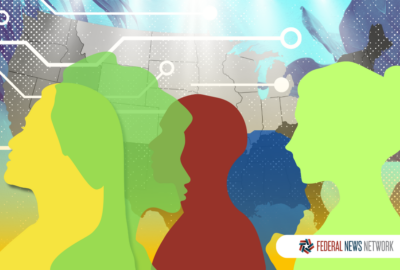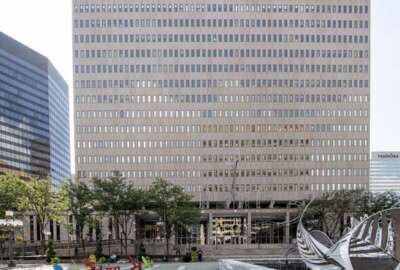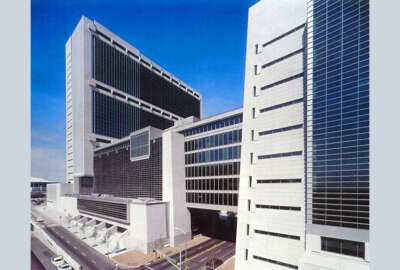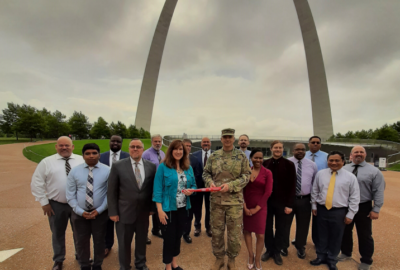Sunshine, sea and surfing: The Western Region’s FEBs
The Western U.S. may be the farthest region from D.C., but FEB leaders in the area see their distance as a benefit, as they highlight the unique perspectives and...
From Feb. 12-16, Federal News Network will, day by day, dive into the details of each of the four Federal Executive Board regions currently operating across the U.S. On top of featuring the work and plans of each of the boards, we’ll take a closer look at the path that lies ahead for FEBs. Stay tuned for more!
The Western Region is, of course, the farthest area geographically from federal headquarters offices housed in Washington, D.C. But Federal Executive Board (FEB) leaders all across the western U.S. see their distance from the nation’s capital as a real benefit.
Not only can western FEBs highlight the perspectives and challenges of federal employees thousands of miles away — they can also bring forward ideas unique to the area. There are also proportionally more American Indian, Alaskan Native, Native Hawaiian and Pacific Islander federal employees in the West, more so than anywhere else in the country.
Regional employee demographics:
Here’s who is working for the federal government in the West — and scroll down further to see what a few FEB leaders in different western cities (including all the way out to Hawaii!) had to say:
The Western Region’s FEBs:
Click an FEB link to travel down the page:
Los Angeles
Hawaii
Seattle
San Francisco
Note: Responses from FEBs have been edited for length and clarity.
City of Angels: Los Angeles’ FEB
By: Christal Murray, Los Angeles FEB outgoing executive director | Return to the top
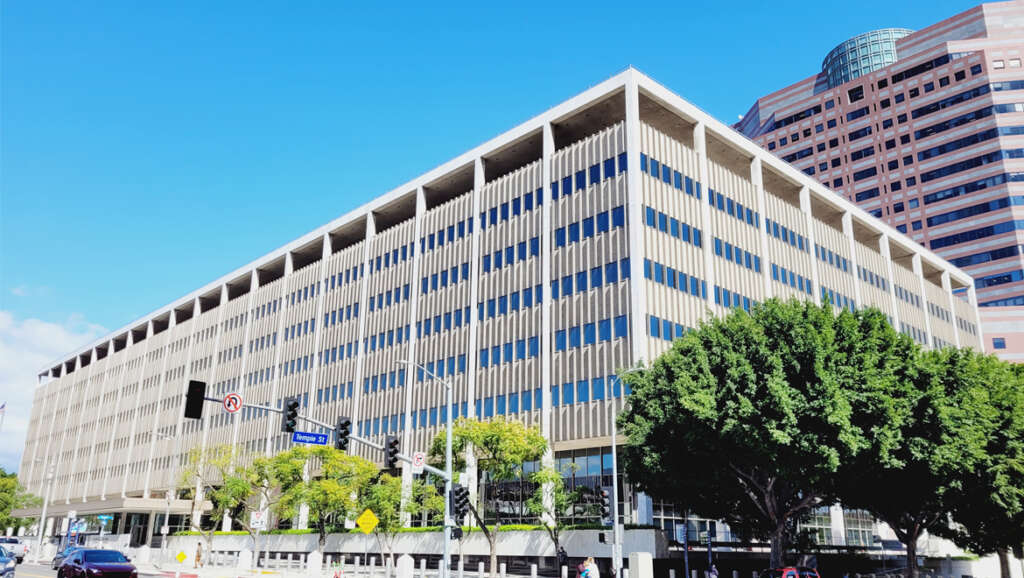
Why is your local FEB important to federal employees working in your region?
The Greater Los Angeles Federal Executive Board (GLA FEB) is important to employees in the LA area because we have over 275 federal agencies that we support. We have more people, businesses and a greater diversity in the makeup of population and geography than any other metropolitan area in the nation. As a result of this, there is more competition for employees than any other metropolitan area in the nation. Having the GLA FEB present allows them to stay informed of important information coming down from Washington, D.C.
What does your local FEB hope to accomplish over the next year?
The GLA FEB would like to keep serving our community as well as the federal workforce. We would like to select another elementary school to adopt or branch out and adopt a high school, as well as continue to reconnect with the universities and colleges in the area. There are 215 colleges and universities in the area, 138 of which are in Los Angeles County.
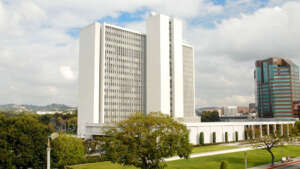
What makes your geographical region a unique place for federal employees to work?
With over 275 federal agencies and over a dozen major industries, the LA region is known as a place where innovations are born. The GLA is famous for the creative collisions which occur when industries overlap, driving new business concepts and creating entirely new sectors. This makes the GLA, some would argue, the creative capital of the nation. All this success can be traced to our highly diverse, skilled workforce and the visionaries. As a result of this, there is more competition for federal employees than any other metropolitan area in the nation. I would say that LA offers far more than a beautiful climate, hikeable mountains and sunny beaches.

What do you wish people understood better about the impact of federal employees’ work in your area?
There are 40 federal departments represented by multiple agencies with over 727,300 employees in the GLA. The LA region has the greatest concentration of mathematicians, scientists, engineers and skilled technicians in the country that make a great contribution to the space. Federal employees in the area are helping to keep the wheels of industry successfully moving, and helping to keep our city and nation safe. In addition, we offer numerous services that affect the lives of all residents, including law enforcement, tax collection, public health protection, public social services, elections and flood control.
What’s a must-try food or activity for anyone visiting the area, and why?
Because of the diversity in the GLA, there are so many types of food choices. Whatever you have a taste for, you can find. But you must try In-N-Out Burger and Randy’s Donuts if visiting the LA area.
Los Angeles County is a popular destination spot, with numerous attractions for every resident and visitor. The region’s world-famous amusement parks are the movie studios and theme park for Universal Studios in Hollywood.
What are the benefits and challenges of your distance from D.C.?
Some challenges would be that sometimes information doesn’t flow down as fast to those outside of D.C., and sometimes our voices or input does not seem to be carried back to decision-makers in D.C. A benefit of not working in the D.C. area is that we are less engaged in politics and those that are trying to make a big name for themselves. I believe we have more time to provide effective support when not having the distractions that might come with working in D.C.
The Aloha State: Hawaii’s FEB
By: Raymond Tanabe, Honolulu-Pacific (Hawaii) FEB 2023 chairman | Return to the top
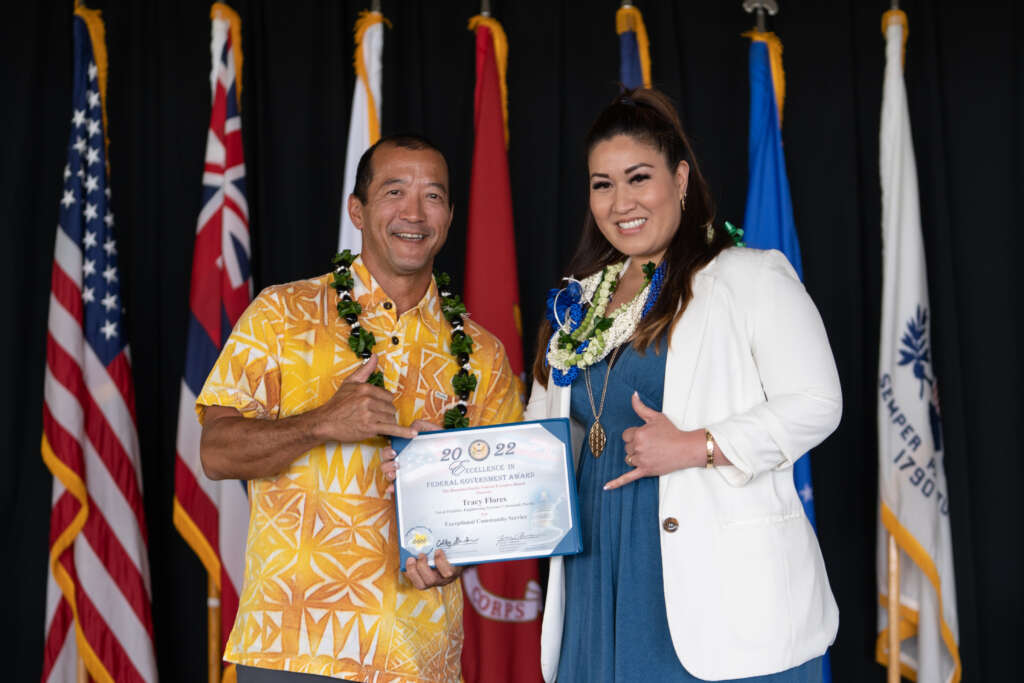
Why is your local FEB important to federal employees working in your region?
The Honolulu-Pacific Federal Executive Board (HPFEB) is an important conduit between our nation’s capital and federal employees in Hawaii, Guam, the Commonwealth of the Northern Mariana Islands, American Samoa and some overseas locations. In Hawaii alone, there are over 23,000 federal employees, and almost as many annuitants. The HPFEB serves as the hub of the federal agencies in the region, connecting through communication, coordination and collaboration. The HPFEB facilitates cross-agency communication to implement national initiatives, address agency gaps in a collaborative manner and create leadership development and training opportunities.
What does your local FEB hope to accomplish over the next year?
One of the Honolulu-Pacific Federal Executive Board’s flagship programs is our Pacific Leadership Academy. The program began in 2003 and has graduated more than 1,500 mid- to senior-level fellows. This program is designed to meet the leadership development needs of selected federal professionals at the GS 13-15 levels and military equivalents, as well as GS 11-12 levels and military equivalents who work federal government organizations in the Pacific Rim. We recently welcomed this year’s almost 80 students with the first in-person session of fiscal 2024.
We also hope to continue our annual Excellence in Federal Government awards to recognize federal employees in the Honolulu-Pacific area who are providing superior service to the American public. Other efforts include continuing and building support to federal agencies looking to recruit and retain employees, as well as additional leadership skills development training for existing personnel. Finally, we’re excited to hear that the emergency notification capabilities offered by the Office of Personnel Management will be coming back, so that we can continue to provide situational awareness information to federal leaders in Hawaii during emergencies to help them make critical decisions and protect the safety of their employees.
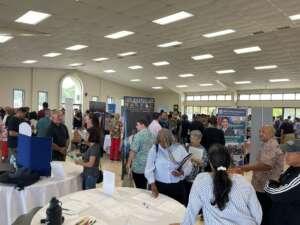
What makes your geographical region a unique place for federal employees to work?
I’ve heard the geography of the Pacific described as a bunch of islands which are separated by water. I prefer to think it’s a community of islands which are connected by water. The sheer distance from Washington, D.C., and difference in time zones means the federal government has to maintain an active presence, work together and share resources where appropriate to provide equitable delivery of federal programs and services.
The Indo-Pacific region is critically important to U.S. national security and is abundant in natural resources that are often threatened by invasive species, a changing climate and human activities. The Indo-Pacific strategy of the U.S. declares, “The United States is committed to an Indo-Pacific that is free and open, connected, prosperous, secure and resilient.” The concentration of federal resources in Hawaii, Guam and American Samoa means federal employees are involved in a lot of international engagements and partnerships across the region. The issues we address are fascinating and diverse. The people we are fortunate to work with are friendly, welcoming and amazing!
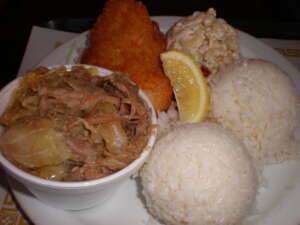
What do you wish people understood better about the impact of federal employees’ work in your area?
Federal employees in the HPFEB region provide a vast array of services for residents and visitors. Federal employees support severe weather warnings, volcano monitoring and endangered species projection, as well as passport issuance, border security and veteran’s affairs. In between, air traffic controllers direct aircraft overhead, first responders search for lost boaters and stewards keep watch for violations of clean air and water standards. Federal employees are proud members of the island communities they serve.
What’s a must-try food or activity for anyone visiting the area, and why?
Hawaii has a wonderful and eclectic mix of foods. In my opinion, the most iconic of these is locally known as a “plate lunch.” The basic plate lunch consists of two scoops of white rice, a single scoop of macaroni salad and a main entrée, like beef stew, fried chicken or fish. While the plate lunch has evolved into a variety of options, the original version perseveres at eateries across the islands. Just ask any group of locals where the best plate lunch is and you’ll be sure to start an active discussion!
When visiting the islands, I encourage everyone to experience the ocean in some capacity. There is a wide variety of ocean sports like surfing, snorkeling and stand-up paddling. You can go further offshore by hiring a sportfishing charter, whale-watching tour or swim with the sharks experience. For the less adventurous, simply relaxing on a tropical white sand beach and occasionally dipping in the shallows to cool off is a great option. Please remember to enjoy the ocean safely, use sunscreen and heed warning and hazard signs. Access the water where lifeguards are present.
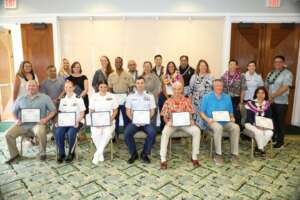
What are the benefits and challenges of your distance from D.C.?
The time difference and physical distance from D.C. are the most notable challenges. For those of us in Hawaii, even a 7:00 a.m. start time means it’s already noon or 1:00 p.m. for our senior leaders in D.C. This difference often translates to pre-dawn meetings for Hawaii employees and after-hours connections in the evenings for our east coast colleagues. And of course, Guam and the Northern Mariana Islands are 20 hours ahead of us here in Hawaii, so coordinating their time difference to D.C. is even more difficult. Finally, there are the challenges of air travel being both time-consuming and expensive. It can be hard for us to get to important meetings in D.C., and even harder for senior leaders to come here to learn about our experiences and issues. Even without the perception that travel to the Pacific is a vacation, it can be hard for senior leaders to dedicate the time a trip out here requires. There’s nothing like in-person experiences to help our leaders understand the importance and the issues of the Pacific.
The time difference also works to our advantage, allowing us to interact with D.C. colleagues in the morning, make local connections in the middle of the day and work with international partners in the Oceania, Indo-Pacific, and southeast Asia regions before we wrap up. I once joked with a supervisor that the time difference can be a real blessing. Sometimes a hair-on-fire issue which arises overnight or first thing in the morning in D.C. is often resolved before I open my email inbox in the morning.
Emerald City: Seattle’s FEB
By: Weston King, Seattle FEB chairman | Return to the top

Why is your local FEB important to federal employees working in your region?
With membership from 177 federal agencies employing over 48,000 employees, including large military installations at Naval Base Kitsap and the Army’s Joint Base Lewis-McChord, the SFEB is the one organization responsible for convening and connecting across all departmental lines. The SFEB is uniquely poised to bring stakeholders together across traditional collaborative teams and to surface local priorities, which we learn about from consistent and local conversations.
What does your local FEB hope to accomplish over the next year?
The Seattle FEB is hoping to replicate and improve on the federal job fair that we co-hosted last June, along with help from the U.S. District Court for the Western District of Washington and the U.S. Agriculture Department. Also, we are in the planning stages for the next phase of FEB Forward, a national effort that will extend coverage of the FEBs to entire states. So the Seattle FEB’s scope will extend from our current western counties to the whole state of Washington. This will be a great way to extend our local conversations statewide and to offer the benefits of federal collaboration to more of our components in the eastern part of the state.
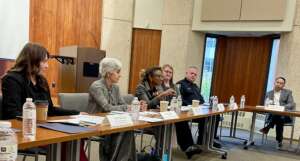
What makes your geographical region a unique place for federal employees to work?
We always joke about living and working in “the other Washington,” but 85% of federal jobs are outside of the Washington D.C. area. Most federal agencies have at least some presence in our state, if not across our region. Washington state hosts many agencies whose missions are tied to our unique geography, such as the Northwest Science agencies at the National Oceanic and Atmospheric Administration and the U.S. Coast Guard’s Pacific Area. What better place to study earthquakes and forests than the Pacific Northwest?
What do you wish people understood better about the impact of federal employees’ work in your area?
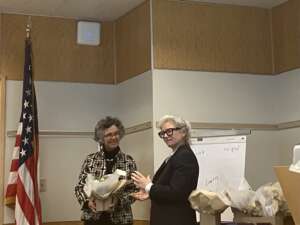
Federal employees are mostly in the civil service, meaning we are not elected or appointed, and our jobs do not change when presidential elections occur. As a small sample of our agencies’ missions, federal employees work every day to ensure the safety of our food supply; to care for those who have served in our nation’s military and for their families, caregivers and survivors; to support small businesses; to respond to disasters; to adjudicate criminal, civil and administrative actions where needed; and respond to homeland security threats.
What’s a must-try food or activity for anyone visiting the area, and why?
Anybody with a little time in downtown Seattle should take the self-guided tour through the Seattle Central library. It’s free, accessible, fascinating and educational, even if you don’t know anything about architecture!
What are the benefits and challenges of your distance from D.C.?
The time difference is not all bad. Sometimes a project can be handed off between staff in different time zones and it helps us get to a resolution faster.
Golden Gate City: San Francisco’s FEB
By: Matthew Johns, San Francisco FEB chairman | Return to the top
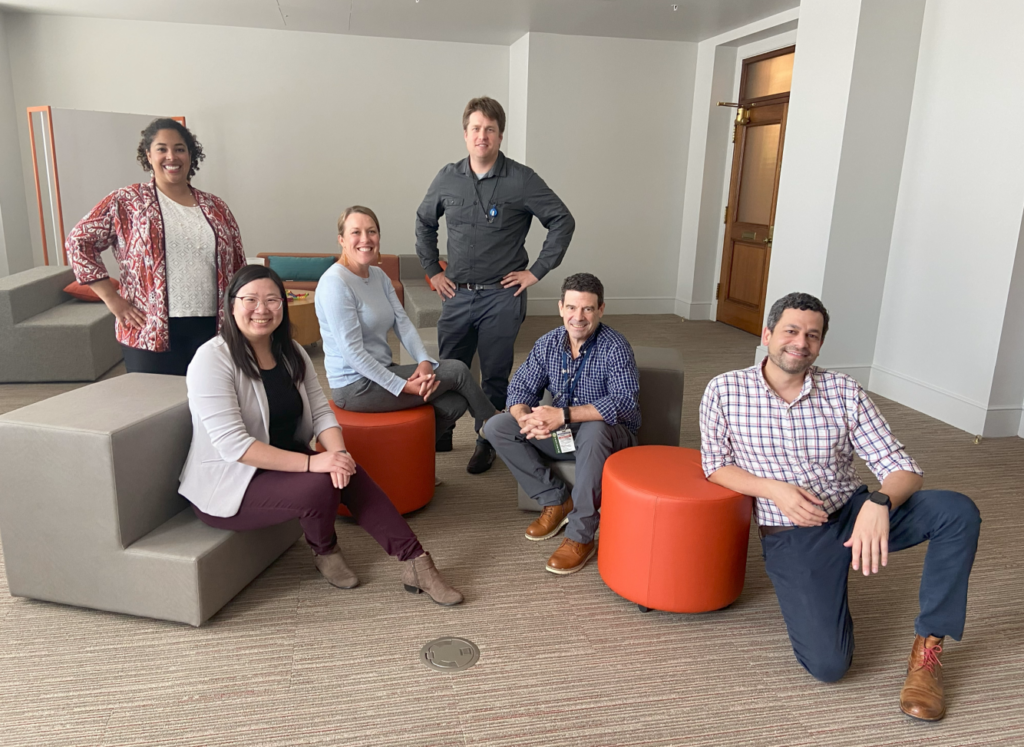
Why is your local FEB important to federal employees working in your region?
The San Francisco FEB is relied upon by agency directors for coordination and collaboration on a variety of services, including timely and accurate information on emergencies, the President’s Management Agenda, federal human resources topics and priorities of the president. We also provide services such as a highly sought-after and rigorous leadership program for high-performing staff, training opportunities, federal employee recognition programs, communities of practice, networking and learning, monthly meetings with speakers on topics relevant to our federal executives, and as a general resource for interagency collaboration.
![]() What does your local FEB hope to accomplish over the next year?
What does your local FEB hope to accomplish over the next year?
Host our next leadership development program, put on three job fairs, provide overdose awareness training, create opportunities for Diversity, Equity, Inclusion and Accessibility training and experiences, fill positions, provide opportunities for internships and rotations, and host our annual Federal Employee of the Year program. We also want to increase our outreach to nonprofit, quasi-governmental, intergovernmental and educational institutions. Last, we’re excited to launch the Executive Leadership council, which will provide networking and training opportunities for senior leadership.
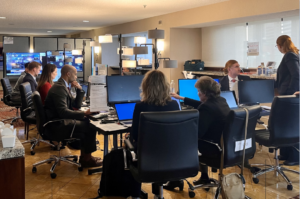
What makes your geographical region a unique place for federal employees to work?
The Bay Area is known for the private sector’s entrepreneurial and agile approach to problems. The same applies to our federal staff. We often establish new and improved ways to accomplish our mission. Multiple Federal Employee of the Year winners have been recognized for finding efficiencies and new approaches to long-standing challenges. As a regional city, we are uniquely situated to work with staff in the area whose responsibilities cover multiple western states. The impacts of their work are local, regional and national.
What do you wish people understood better about the impact of federal employees’ work in your area?
The federal government in the nine-county Bay Area includes over 460 departments, agencies and offices, employing 70,000 federal, military and postal workers, as well as federal contractors. The San Francisco Department of Veterans Affairs Health Care System runs the largest funded research program in the Veterans Health Administration with $84.3 million in research expenditures. We’re also home to four of the 17 Energy Department labs, including the Stanford Linear National Accelerator Laboratory. We have over 10 Defense Department National Training Centers, dozens of DoD installations and the Naval Postgraduate School in Monterey, California. There are also 27 national parks, seashores, monuments and historical trails, including the Presidio in San Francisco. We have a unique governance over the San Francisco Presidio. After the Army decommissioned it, it is now run by a federal commission, The Presidio Trust. The world’s largest tree, the General Sherman, is located in Sequoia National Park. It stands 275 feet tall, and is over 36 feet in diameter at the base. The Bay Area is also home to the National Park Service’s famous island Alcatraz. There are national wildlife refuges, 14 national forests and 13 USACE recreation areas. We are also home to what is referred to as the second-most beautiful federal building, the Browning Courthouse (the first being the Library of Congress).
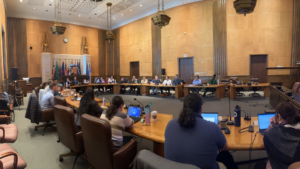
California produces $30 billion in sales of agricultural products from the San Joaquin Valley. And we are home to current and former cabinet secretaries including Robert Reich, Condoleezza Rice, Leon Panetta, Janet Napolitano and Xavier Becerra.
What’s a must-try food or activity for anyone visiting the area, and why?
The Bay Area is home to more than 50 Michelin Star restaurants, including the three-star French Laundry, Chez Panisse and Single Thread. The Bay Area is also home to numerous world-class wineries in the Napa and Sonoma Valleys. If you are visiting the Bay Area, though, I would consider treating yourself to a mission burrito in the heart of San Francisco’s Mission District. You won’t be disappointed.
Copyright © 2024 Federal News Network. All rights reserved. This website is not intended for users located within the European Economic Area.
Drew Friedman is a workforce, pay and benefits reporter for Federal News Network.
Follow @dfriedmanWFED
Daisy Thornton is Federal News Network’s digital managing editor. In addition to her editing responsibilities, she covers federal management, workforce and technology issues. She is also the commentary editor; email her your letters to the editor and pitches for contributed bylines.
Follow @dthorntonWFED





